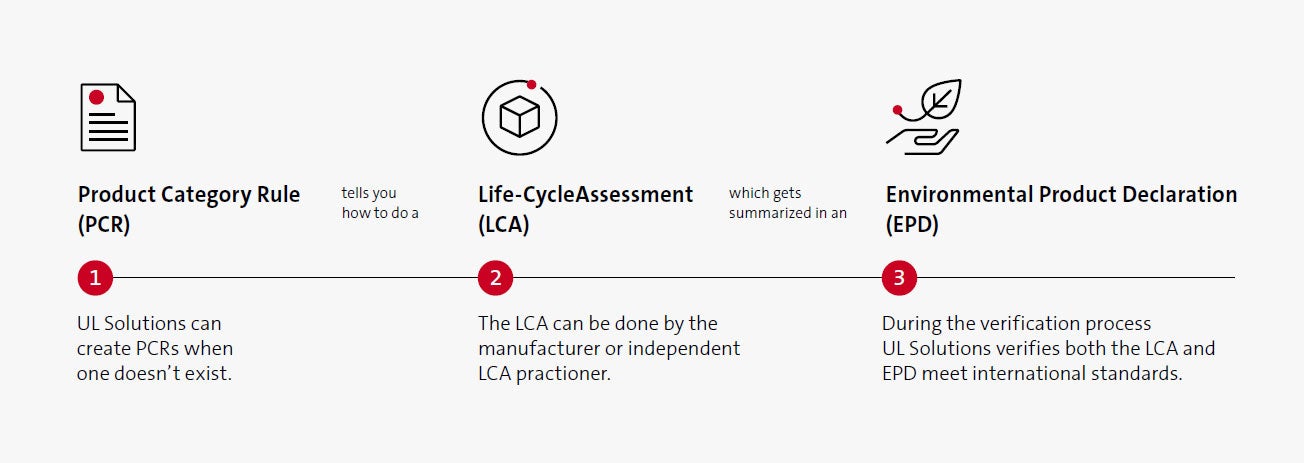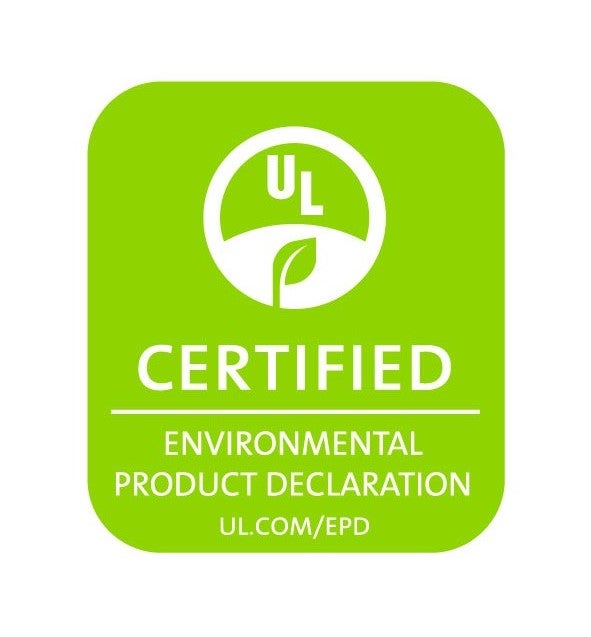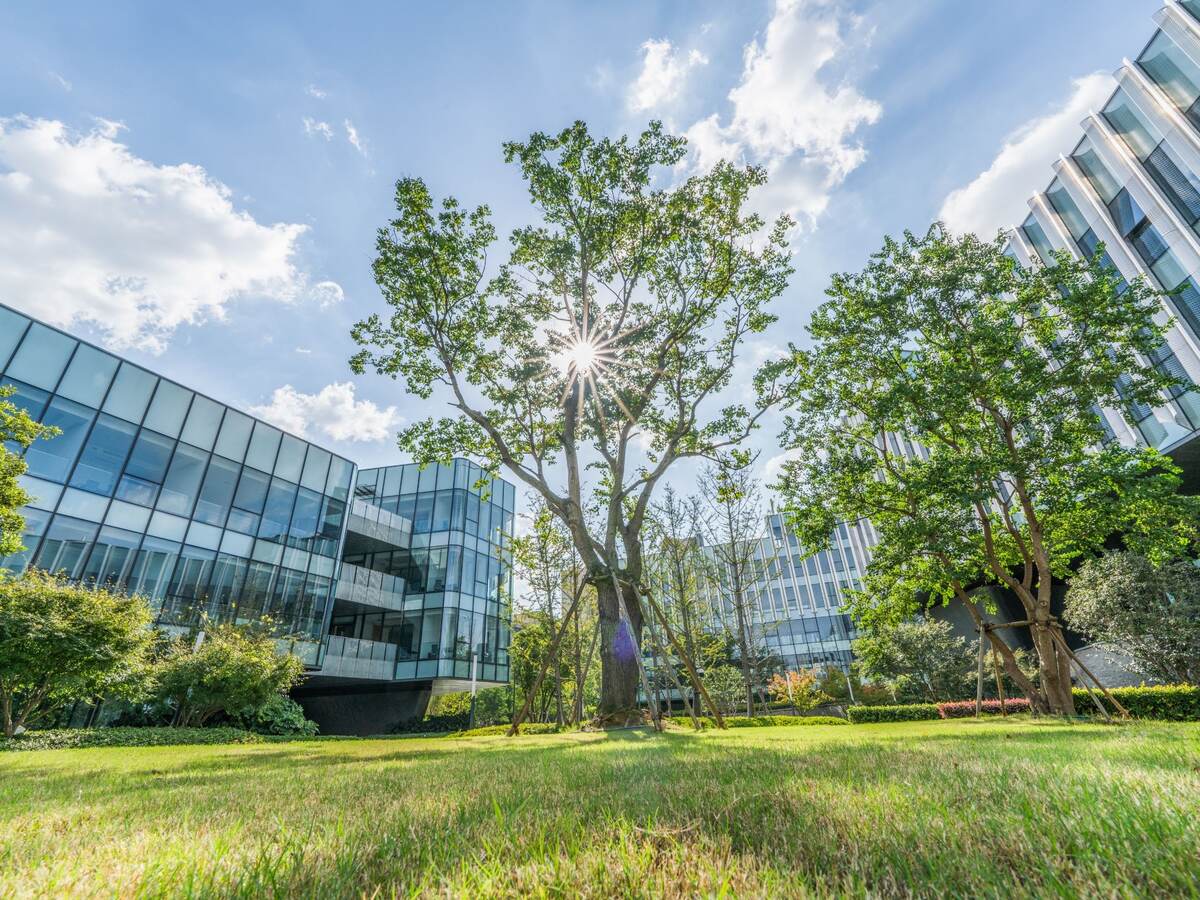Environmental product declaration (EPD) — at the heart of transparency
Market demands are growing for the disclosure of a products’ cradle-to-grave environmental impact. Because of this, manufacturers need to transparently report their products’ environmental performance or impact to buyers and specifiers so that they can make informed buying decisions. Environmental product declarations (EPDs) allow manufacturers to do this by telling a product’s complete sustainability story in a single, comprehensive report. An EPD from UL Solutions can also include other product impacts, such as land use changes, potential toxicity risks or corporate environmental initiatives.
What’s driving demand for EPDs
A verified EPD can help a manufacturer become a preferred supplier for designers, contractors, architects and other buyers while also helping satisfy investor and stakeholder requests. This growing demand can be attributed to several factors:
Green building rating systems/schemes – Products with EPDs are awarded credits under several green building programs, including LEED, BREEAM and Green Globes.
Public procurement – Having an EPD can give you a competitive advantage for green public procurement. EPDs can be used to show compliance with environmental criteria specified in bid or tendering documents.
Regulations – In some areas , EPDs are required for specific products or applications. For example, in the U.S., some states (California, Colorado, Oregon and Washington) all have carbon reduction policies that require EPDs for specific building products.
Sustainable development goals – EPDs can help you measure the impact of your products and optimize your processes.
Marketing – EPDs can help a manufacturer back up marketing claims about a product’s environmental performance.
Building - level lifecycle assessment (LCA) – As interest in the embodied carbon of buildings grows, building-level LCAs are starting to be required. EPDs provide product-specific performance data that can be used towards the creation of the whole building LCA.
Elements of an EPD
An environmental product declaration (EPD) transparently reports the lifecycle assessment of a product in a single, comprehensive report, which is verified by UL Solutions against the international ISO 14025 standard. The EPD provides information to buyers about a product’s impact on the environment, such as global warming potential, smog creation, ozone depletion and water pollution.

An EPD is a summary of the lifecycle assessment (LCA) for a product from material extraction to production, shipping, consumption and disposal. The LCA is developed according to Product Category Rules (PCRs) — product-specific calculation requirements and methodologies that helps ensure consistent data collection and analysis during LCA creation. Because of this, EPDs enable the comparison of environmental impacts of like products, providing increased transparency.
Why UL Solutions for EPD verifications?
- UL Solutions is a leading ISO 14025 program operator for independent, third-party verification of EPDs.
- Our verified EPDs are recognized and respected by buyers, building specifiers and purchasing organizations, allowing them to quickly review a product’s environmental impacts and utilize them in projects.
- While we can produce EPDs for global markets, we also have mutual recognition agreements in place with several other EPD program operators, allowing a single-source provider experience and greater exposure for your products.
- UL Solutions empowers both manufacturers and purchasers to transform their environmental stewardship into true market leadership. We support manufacturer and their customers in their drive to act in a more environmentally responsible way.

The role of PCRs
Product Category Rules (PCRs) are a tool that define how the life cycle assessment (LCA) should be conducted. ISO 14025 compliant EPDs summarize an LCA that was created following an applicable PCR. PCRs already exist for a variety of product types, but in some cases a PCR must be created before you can move forward with an EPD certification project.
UL Solutions is a leader in Product Category Rule (PCR) creation, having led the development of PCRs for many industries, including sealants, hand dryers, tires, printers and cladding.

Environmental Product Declaration
Get connected with our sales team
Thanks for your interest in our products and services. Let's collect some information so we can connect you with the right person.






